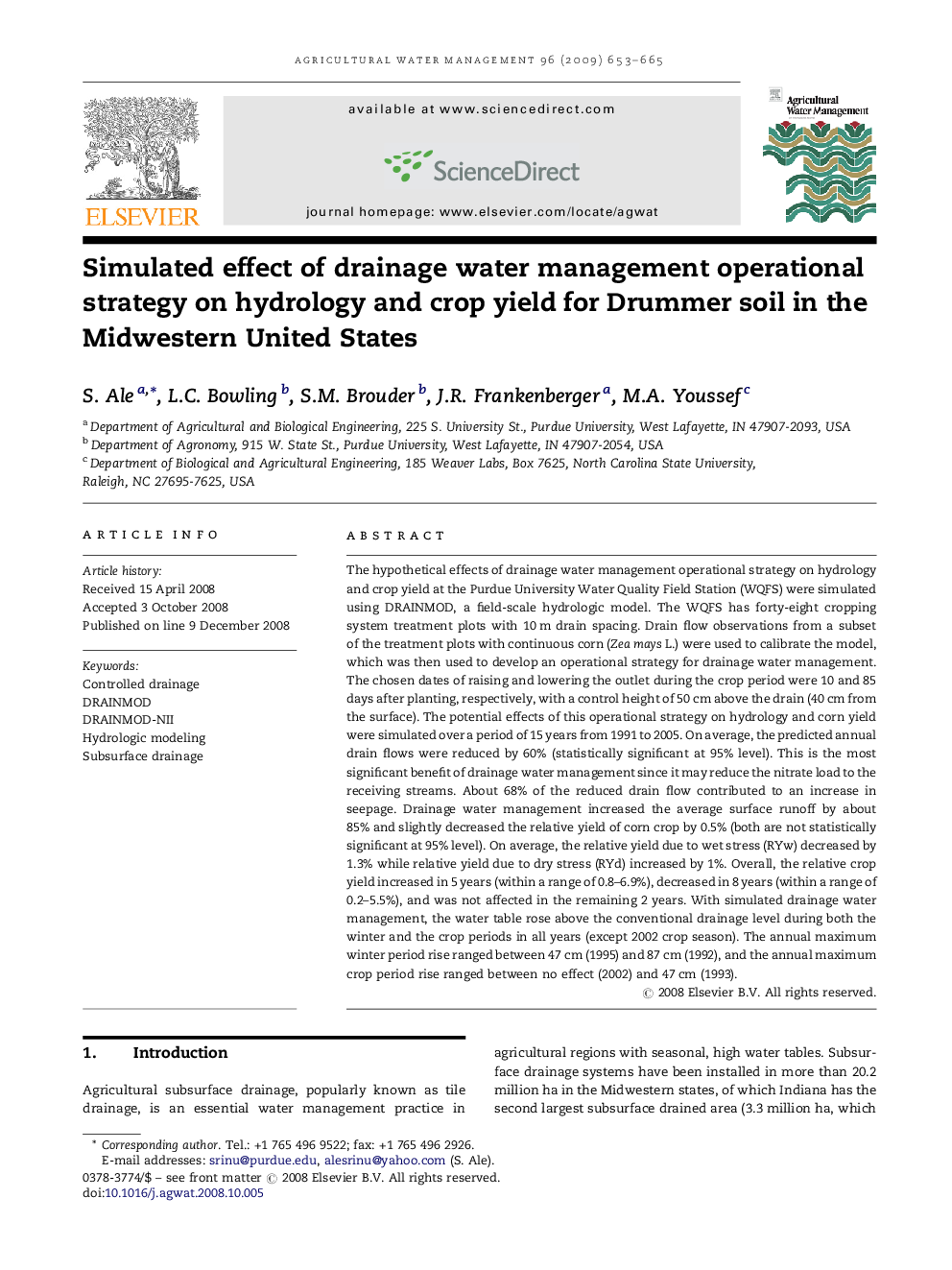| کد مقاله | کد نشریه | سال انتشار | مقاله انگلیسی | نسخه تمام متن |
|---|---|---|---|---|
| 4480254 | 1316482 | 2009 | 13 صفحه PDF | دانلود رایگان |

The hypothetical effects of drainage water management operational strategy on hydrology and crop yield at the Purdue University Water Quality Field Station (WQFS) were simulated using DRAINMOD, a field-scale hydrologic model. The WQFS has forty-eight cropping system treatment plots with 10 m drain spacing. Drain flow observations from a subset of the treatment plots with continuous corn (Zea mays L.) were used to calibrate the model, which was then used to develop an operational strategy for drainage water management. The chosen dates of raising and lowering the outlet during the crop period were 10 and 85 days after planting, respectively, with a control height of 50 cm above the drain (40 cm from the surface). The potential effects of this operational strategy on hydrology and corn yield were simulated over a period of 15 years from 1991 to 2005. On average, the predicted annual drain flows were reduced by 60% (statistically significant at 95% level). This is the most significant benefit of drainage water management since it may reduce the nitrate load to the receiving streams. About 68% of the reduced drain flow contributed to an increase in seepage. Drainage water management increased the average surface runoff by about 85% and slightly decreased the relative yield of corn crop by 0.5% (both are not statistically significant at 95% level). On average, the relative yield due to wet stress (RYw) decreased by 1.3% while relative yield due to dry stress (RYd) increased by 1%. Overall, the relative crop yield increased in 5 years (within a range of 0.8–6.9%), decreased in 8 years (within a range of 0.2–5.5%), and was not affected in the remaining 2 years. With simulated drainage water management, the water table rose above the conventional drainage level during both the winter and the crop periods in all years (except 2002 crop season). The annual maximum winter period rise ranged between 47 cm (1995) and 87 cm (1992), and the annual maximum crop period rise ranged between no effect (2002) and 47 cm (1993).
Journal: Agricultural Water Management - Volume 96, Issue 4, April 2009, Pages 653–665